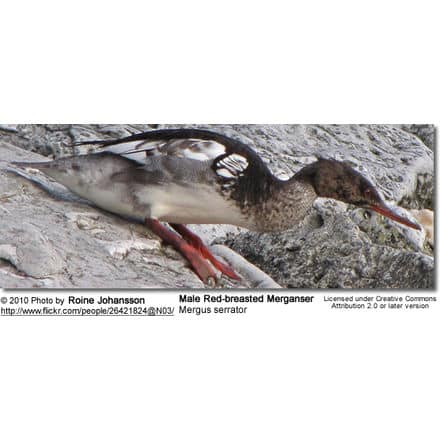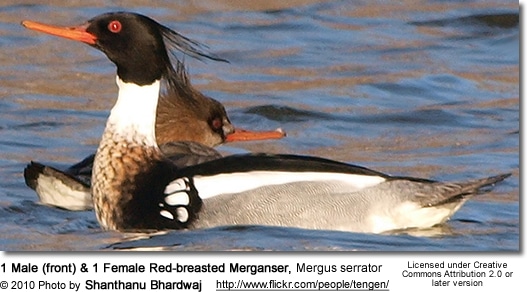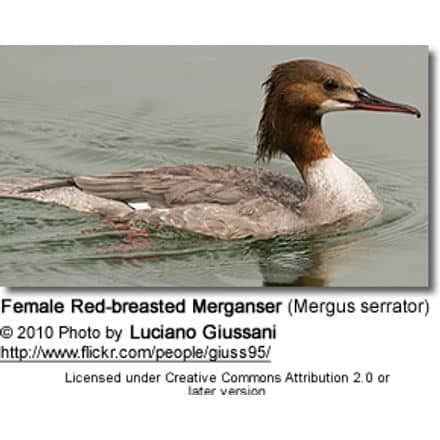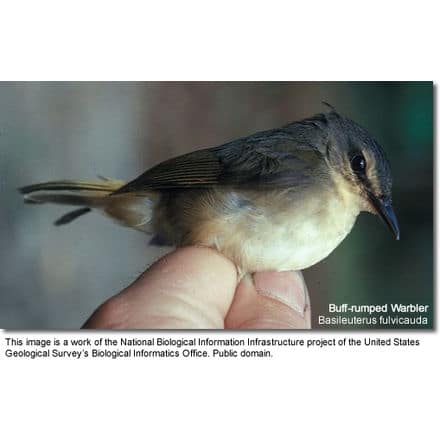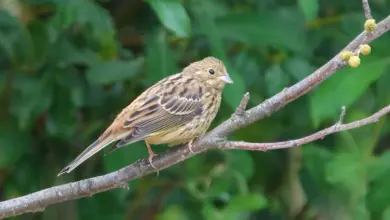Red-breasted Mergansers
The Red-breasted Mergansers (Mergus serrator) is a diving duck
It has been claimed to be the fastest bird in level flight, reaching speeds of 129 km/h (80 mph), but is disputed whether the White-throated Needletail (Swift) is faster, reportedly flying at 170 km/h (105mph).
Distribution / Range
Its breeding habitat is freshwater lakes and rivers across northern North America, Greenland, Europe, and Asia.
It nests in sheltered locations on the ground near water.
It is migratory and many northern breeders winter in coastal waters further south.
Status
The Red-breasted Merganser is one of the species to which the Agreement on the Conservation of African-Eurasian Migratory Waterbirds (AEWA) applies.

More Duck Resources
Description
The adult Red-breasted Merganser is 52-58 cm long with a 67-82 cm wingspan. It has a spiky crest and long thin red bill with serrated edges. Adult males have a dark head with a green sheen, a white neck with a rusty breast, a black back, and white underparts.
Adult females have a rusty head and a greyish body.
Juveniles are like the female, but lack the white collar and have a smaller white wing patch.
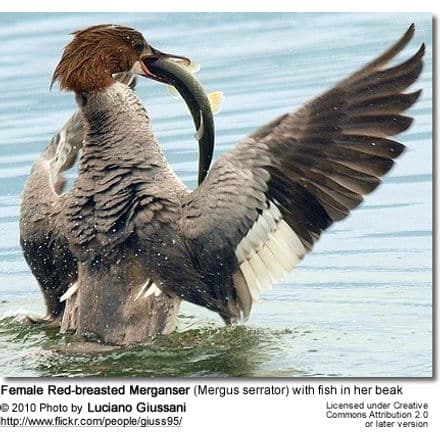
Diet / Feeding
Red-breasted Mergansers dive and swim underwater. They mainly eat small fish, but also aquatic insects, crustaceans, and frogs.
Calls / Vocalization
The call of the female is a rasping prrak prrak, and the male gives a feeble hiccup-and-sneeze display call.
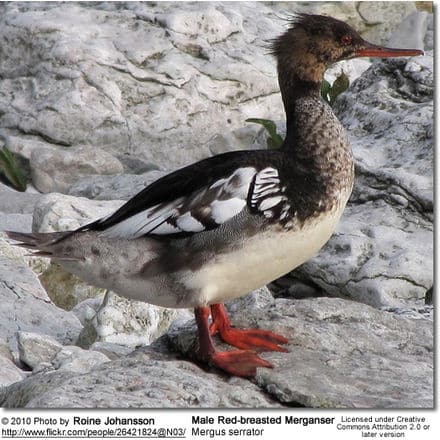
Diet / Feeding:
Red-breasted Mergansers dive and swim underwater when foraging for their staple foods mainly consisting of small fish, aquatic insects, crustaceans, and frogs.
Ducks generally feed on larvae and pupae usually found under rocks, aquatic animals, plant material, seeds, small fish, snails, and crabs.
Feeding Ducks …
We all enjoy ducks and many of us offer them food to encourage them to come over and stay around – and it works! Who doesn’t like an easy meal?
However, the foods that we traditionally feed them at local ponds are utterly unsuitable for them and are likely to cause health problems down the road. Also, there may be local laws against feeding this species of bird – so it’s best to check on that rather than facing consequences at a later stage.
- Foods that can be fed to Ducks, Geese, and Swans to survive cold winters and remain healthy when food is scarce in their environment.
Please note that feeding ducks and geese makes them dependent on humans for food, which can result in starvation and possibly death when those feedings stop. If you decide to feed them, please limit the quantity to make sure that they maintain their natural ability to forage for food themselves – providing, of course, that natural food sources are available.


